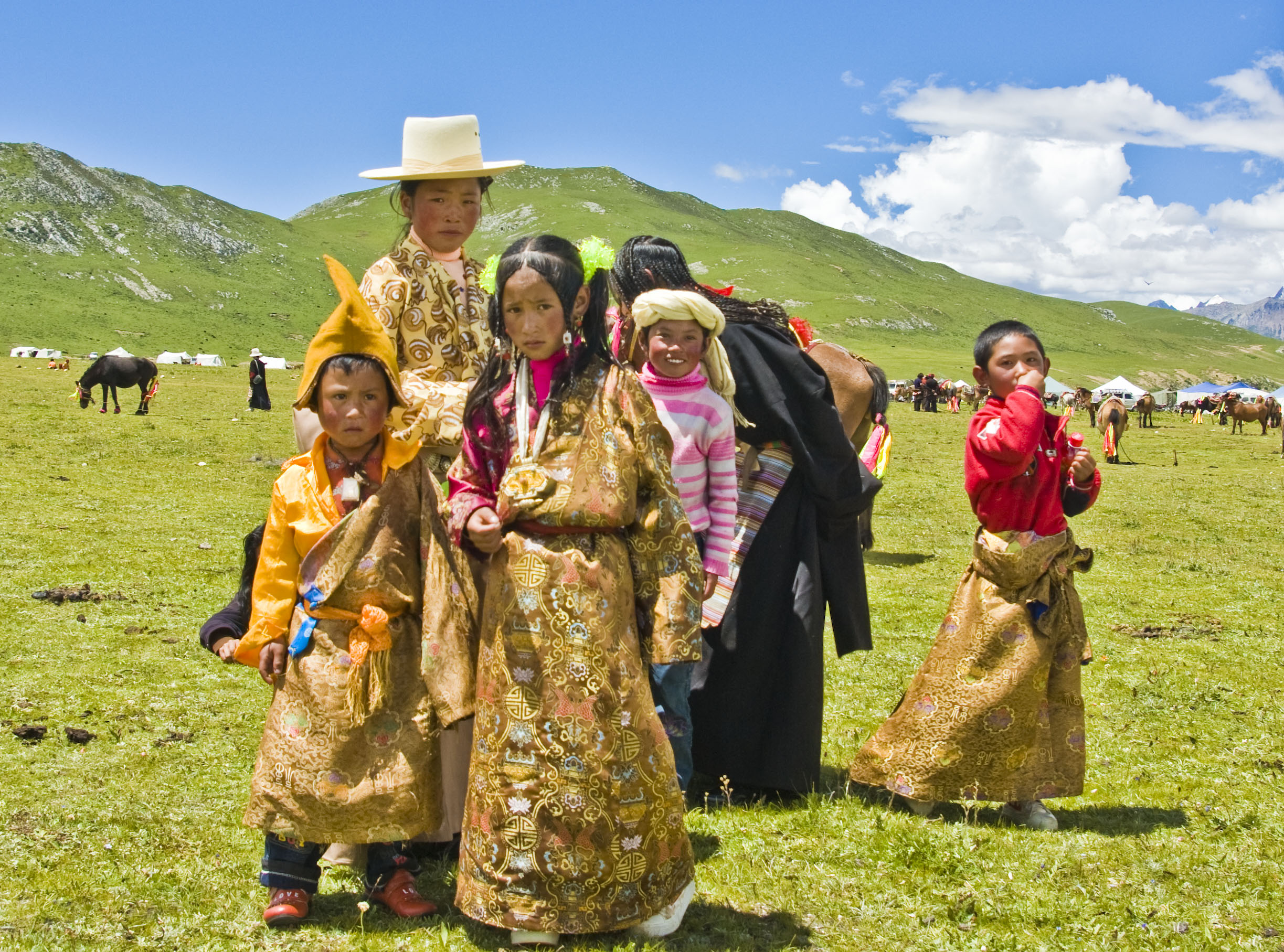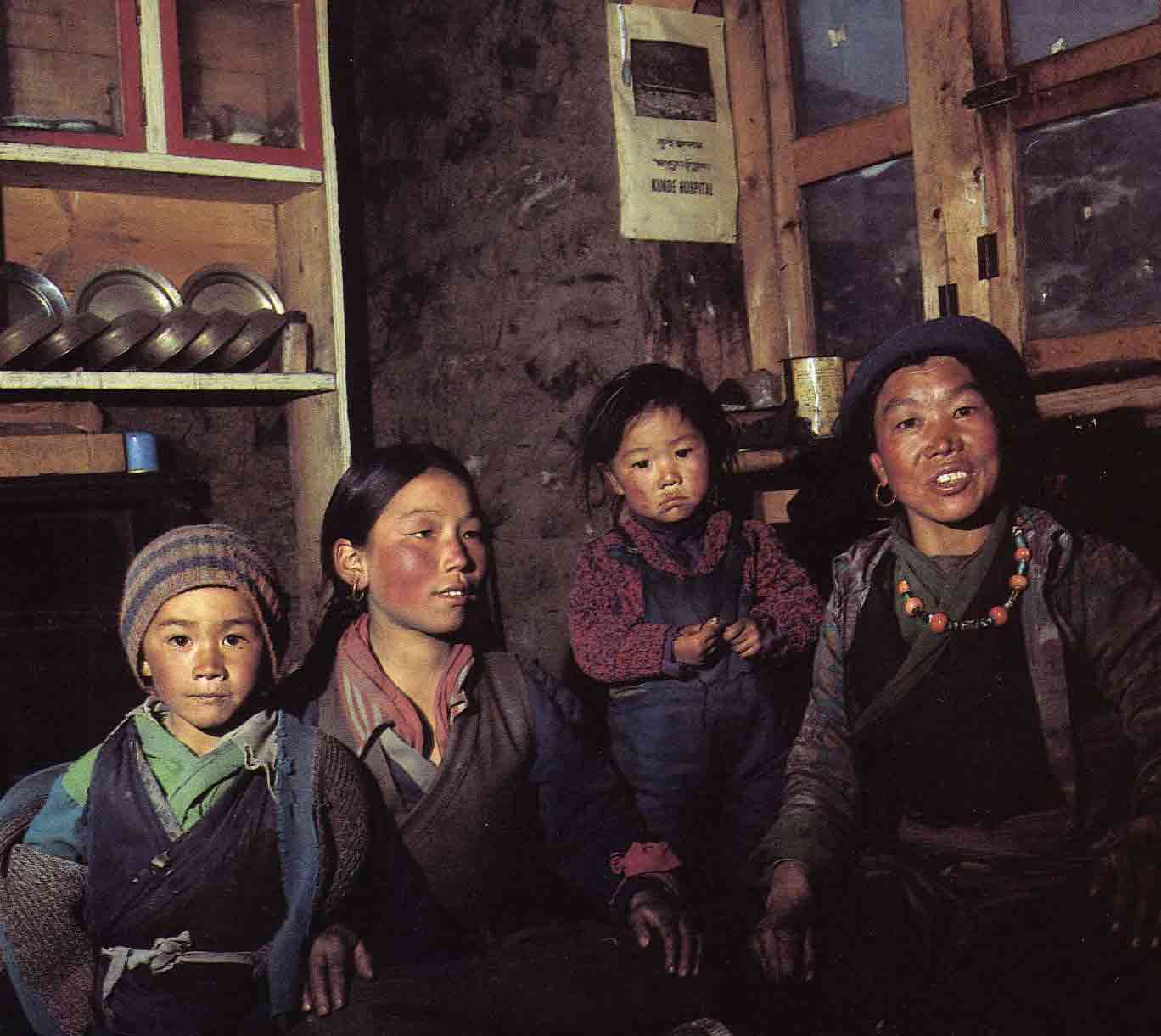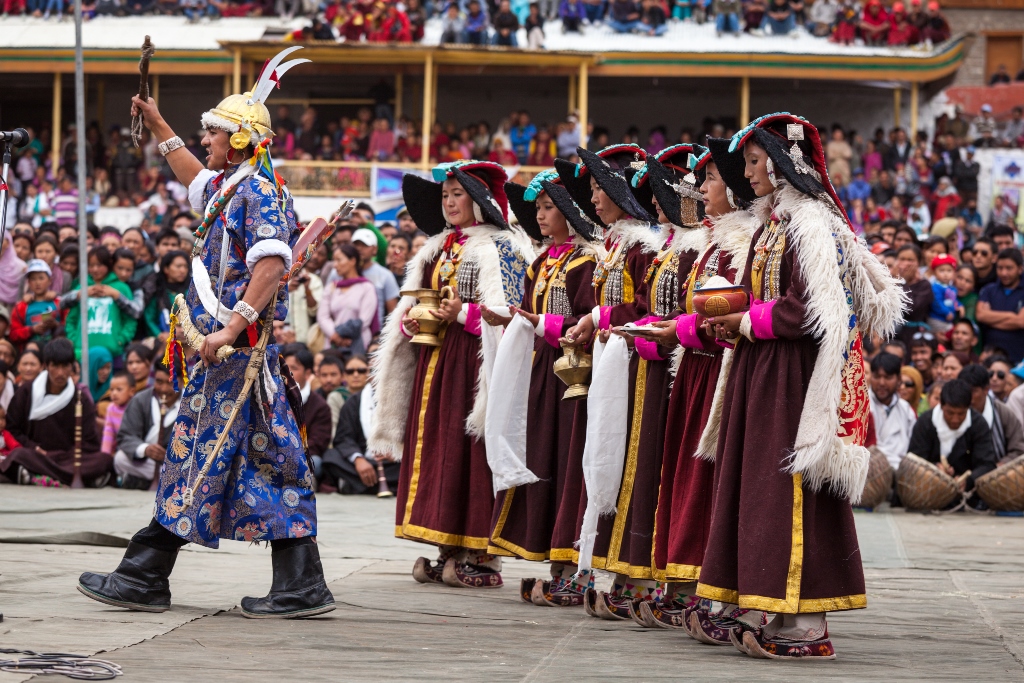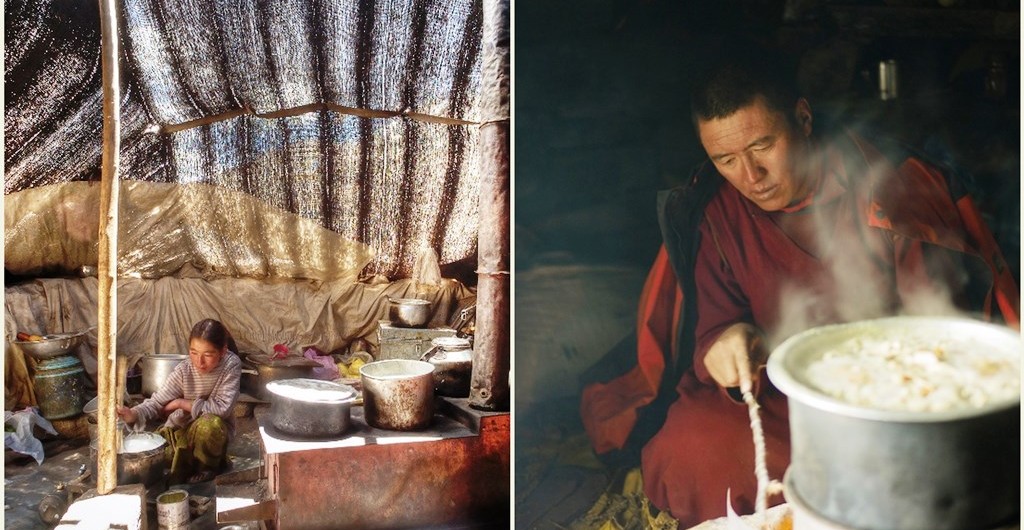Geetika
Latest posts by Geetika (see all)
- Ride The Tide: Kundalika River Rafting Experience - June 20, 2018
- Treks to Go for in May! - April 7, 2017
- Treks for Beginners – Our Pick - March 30, 2017
The Himalayas is one wonder of nature that has intrigued us since time immemorial. Its high snow-clad mountains, rich flora and fauna, and scenic beauty have enchanted one and all. But in all this, we have somehow missed another wonderful aspect of it – its people. So, read on and find out more about the people living in the Himalayas, their history, faith, occupations and living conditions.
Know more about Trekking in the Himalayas
The Great Himalayan Story
The mighty Himalayas rise beyond the Indo-Gangetic plain of Northern India, extending through the Indian states of Jammu and Kashmir, Himachal Pradesh and Uttarakhand to Northeast India, Nepal, Tibet and Bhutan. This entire range of the Himalayan Mountains serves as home to more than 50 million people, with another 450 million settled at the base of it. And this entire population flourishes on the resources that flow from the Himalayas.
Today, the Himalayan population can be classified into three ethnic types, namely Aryans, Mongoloids and Negroids. But the truth about its original inhabitants is still a point of debate. There is a belief that the first settlement in the Himalayas began in 1500 BC when a warrior tribe called Khasa migrated to its western range. This was followed by the migration of Tibeto-Burman people from Southeast Asia to the eastern and central Himalayas in the early part of the millennia. These people were called the Kiratas. However, if one takes into account the Hindu epics and Puranas, then it is deduced that the native inhabitants of the Himalayan region were the Kinnars, Kiratas, Kulinds and Kilinds, with later migration of the Darads and Khasas.
Must Read: 10 Most Exciting Destinations in the Himalayas

Migration Leading to a Diverse Population
Whichever might be the case, one thing is for sure, and that is that migrations within the Himalayas and into it, has happened since the earliest of times. And the reasons for this migration are aplenty. Some migrated to these mountains in the quest of spirituality while some to test their own will power and endurance. For some, it was the pursuit of profits, and for some, it was the political pressure of their states and countries. All these and other factors combined over a period of time to give the Himalayas, an ethnographically complex population.
Ethnicity, Faith and Settlement
If we could segregate the Himalayan people in terms of their ethnicity in the Himalayas, we would find that those living in the higher altitudes on the southern side and those in the northern slopes belong to the Mongloid ethnicity; and it is something that has remained pure owing to the reason that they have a fairly low contact with outsiders. On the other hand, the middle and lower ranges of the southern slopes are home to mix and diverse ethnic groups with Aryan, Negroid and Mongoloid strains. And the reason for this can be attributed to regular migrations, invasions and conquests in these regions.
However, if we try and segregate them in terms of their faith, then we conclude that the Middle Himalayan and sub-Himalayan valleys are predominantly inhabited by the Hindus. Same is the case for the region from eastern Kashmir to Nepal. Those following Islam are mostly found in the western part of Kashmir, with their culture being similar to that of Afghanis and Iranians.
Must Read: Top Places to Have Hot Cup of Tea in the Himalayas!
The Greater Himalayan region in the north is mainly dominated by Tibetan Buddhists, with them being found from Ladakh to north-eastern India. In the eastern Himalayan region of India and nearby areas of eastern Bhutan, the culture and faith practised is similar to those followed in Yunnan Province of China and Northern Myanmar. In Nepal, both Tibetan and Hindu cultures flourish, and as a result, this Himalayan nation has a mixed cultural identity.
And if we segregate them in terms of their settlement, then we would find that:
Sikkim
The Sikkimese population consists of three groups, namely the Nepalis, Lepchas and Bhutiyas. It is said that the Lepchas were the natives of this region, but today, they have a minority population. The history of the Sikkimese people is less known until the enthronement of their first historic ruler, Phuntsok Namgyal, and their conversion to Buddhism.
Explore Trekking Options in Sikkim
Nepal and Northeast India
There is a complex blend of racial patterns in the people of Nepal. The dominant castes of Hindus, namely Chetri, Brahmin and Thakur, along with others, speak Nepali. The Tamangs, Limbus, Magars and Gurungs of Mongoloid strains dominate the middle hills and form the organised groups of tribal hill farmers. The Sherpas from the Solo Khumbu region of the northeast are among the many groups of Bhutiyas that speak in Tibetan dialects.

Uttarakhand and Himachal Pradesh
In the Central Himalayan region of India are located the states of Uttarakhand and Himachal Pradesh. The Garhwal and Kumaon valleys of Uttarakhand are said to have been the home to the Doms and Khasas. According to historians, the Khasas were a West Central nomadic tribe, which entered the Indo-Gangetic plain from the northwest and spread from Kashmir to Assam. In the neighbouring state of Himachal Pradesh, the descendants of the Khasas are today known as Kanets. In the present-day Central Himalayas, the major population is that of the Khasa.
Know more about Trekking in Himachal Pradesh and Trekking in Uttarakhand

Ladakh
According to beliefs, the Ladakh region was once home to a major population of the Darads. This belief has been found somewhat true after the archaeological findings in the region. The present-day population of the Mongoloid descendants can be attributed to the migration of their ancestors in the past.
Human settlements in the Himalayas have also been highly influenced by topography and economic patterns. But climatic conditions remain the most important factor since extreme climate in the Himalayan region has always imposed restrictions on the living conditions and also restricted communication and movement.
The lower hills and foothills of the Indian Himalayas are densely populated owing to the fact that the Himalayan Rivers have made the soils here rich and fertile. On the other hand, in the Greater and Trans Himalayan regions, including Leh-Ladakh and Lahaul Spiti, of extreme climatic conditions and difficult terrain, the population is sparse. The small communities inhabiting these regions are widely dispersed and face continuous hardships of the rugged terrains.
Explore Trekking Options in Ladakh

Himalayan Beliefs, Culture and Way of Life
In the Himalayas, one would be surprised to see that each distinct community and valley has its own socio-cultural methods to face the varied challenges of life. And this is when they are literally cut-off from the rest of the world population. However, the somewhat common geographical factors have meant that these distinct cultures are similar to one another. One might agree or disagree, but the fact remains that physical isolation of the Himalayan people has had one positive result, and that is the preservation of centuries-old knowledge.
Must Read: 25 Most Picture Perfect Spots in the Himalayas!
Another aspect that holds true for all those dwelling in the Himalayas and its foothills is that they worship mountain as their life-giver, preserver and protector. All the communities living in the Himalayan region are nature-dependent, and strongly ethnic and religious. However, this may not be exactly true for those residing in the arid wilderness of the dense forests of the eastern slopes and northern flanks; here people are quite fierce and warrior-like. However, in general sense, the people dwelling in the Himalayas are basically peace-loving. And this can be totally experienced when exploring the various Himalayan destinations. Their warm hospitality makes one realise that they are totally respectful towards the environment they live in, and that their harsh living conditions do not hamper their spirits or way of enjoying life.
The Himalayan people are also known for their rich tapestry of traditional knowledge, which spreads across medicine, architecture and agro-forestry. In terms of occupation, they can be categorised as nomadic pastoralists and subsistence farmers; depending on their specific location and agro-climatic conditions. The majority of the Himalayan population sustains itself through agriculture and animal husbandry.
In the higher reaches of the Himalayas, society is quite liberal while in the lower ranges, it is more conservative. The mountain women folk are responsible for all the sedimentary activities like gathering fodder, fuelwood, farming and cooking while the men are responsible for trade activities or managing the animal herds.
Must Read: The Great Himalayan Lakes
However, there has been some change seen in their lifestyle with the improvements of transportation system and communication in the recent years. And modernisation has definitely affected their social and cultural systems in some way or the other. This specially holds true for the frontier villages of Garhwal, Himachal, Ladakh and Kumaon, where there has been a sudden increase in trade and tourism.

Impact of Increased Tourism on the Himalayan Population
Tourism may have been an impetus for the development of the various Himalayan regions, but as they say, sometimes too much can create an imbalance. This is what has actually happened with the increase in tourism in the Himalayan region. And as a result, the sanctity of the Himalayas is taking a toll. One of the biggest reasons for it is the air pollution caused by vehicles, which drastically increases in the peak tourist season. Also, the increase in tourist activity has resulted in overuse of water resources, which is in scarcity in some high-altitude areas of the Himalayas. Another important factor that is causing an imbalance in the region is noise pollution, with more and more tourists heading the Himalayan way each year.
The effects of over tourism are certainly hampering not only the Himalayan nature but its people as well. Though the situation is still under control, but it will not remain the same for much longer. The concerned authorities need to take some drastic steps, in order to stop the environmental damage that the Himalayas are facing today.



